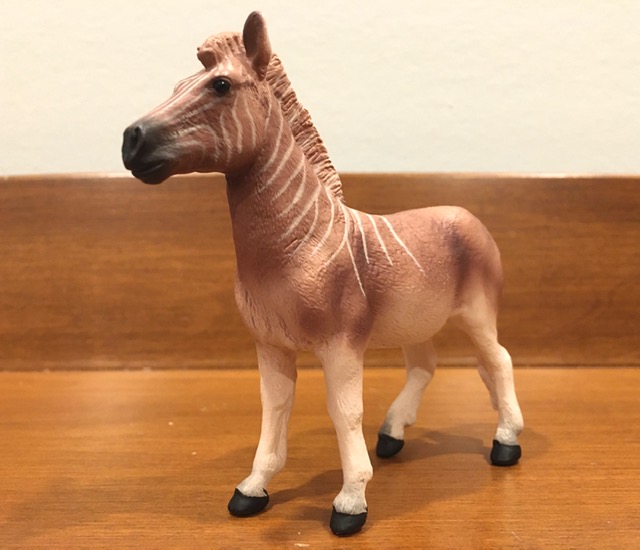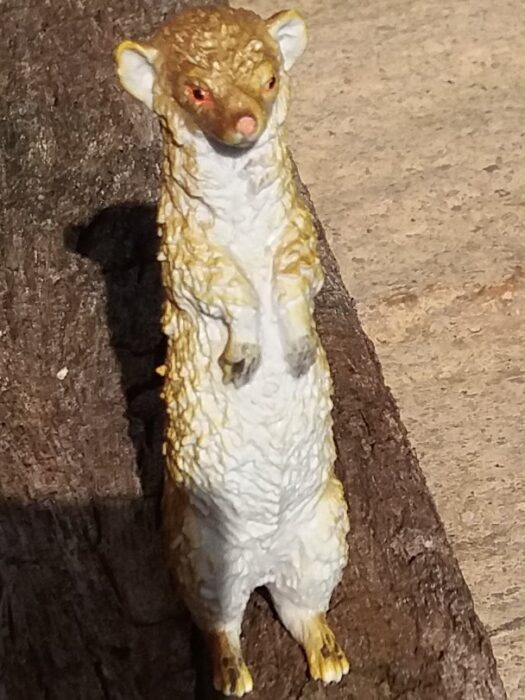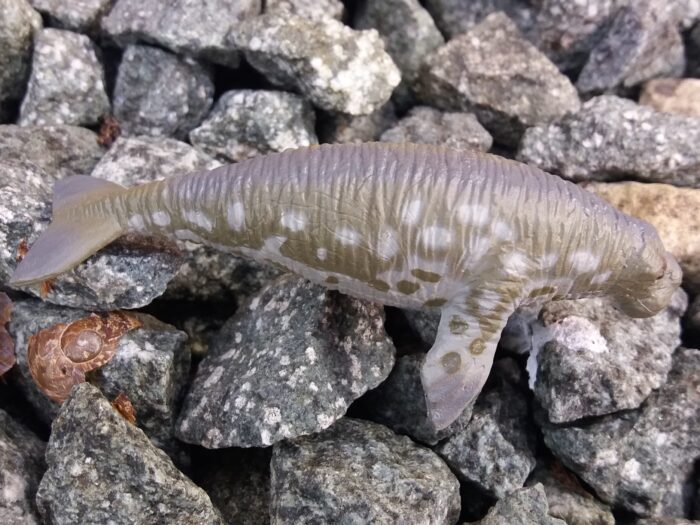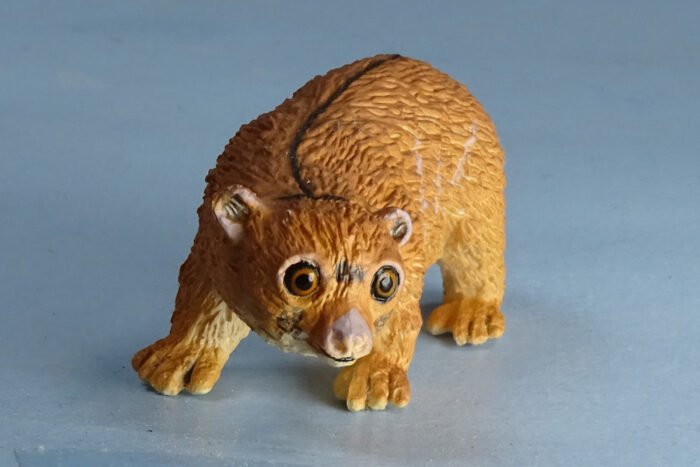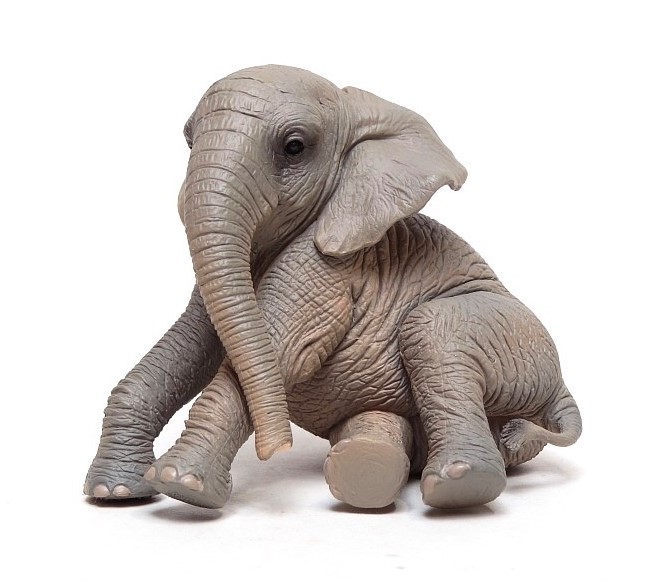Review and images by stemturtle, edited by bmathison1972
The aye-aye, Daubentonia madagascariensis, is a bizarre lemur, with ears like a bat, continuously growing incisors like a beaver, and a long bony middle finger for extracting grubs from under bark. These are adaptations for percussive foraging, which is to tap on wood, echolocate movement, chew a hole, and hook the grub.





